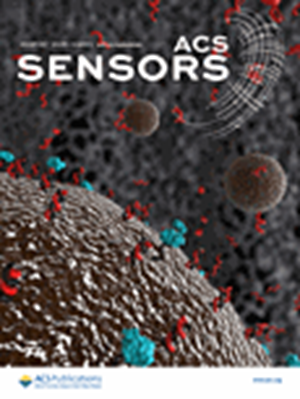原位合成金纳米结构(issAu)在传感应用中的存储限制最小化
IF 8.2
1区 化学
Q1 CHEMISTRY, ANALYTICAL
引用次数: 0
摘要
纳米金(Au)材料以其独特的性能在化学和生物分析领域引起了广泛的关注。然而,它们在传感纳米技术中的实际应用受到纳米材料固有的和普遍的缺点的极大限制。例如,纳米材料在储存过程中的不稳定性极大地影响了测试的可重复性和准确性。迄今为止,缺乏纳米材料合成和储存的标准化协议仍然是纳米技术广泛应用的一个关键障碍。在没有存储的情况下,原位合成纳米材料可能为克服这些与存储相关的挑战提供了一个有希望的解决方案。从这个角度来看,金纳米结构分为两类:预合成金(psAu)和原位合成金纳米结构(issAu)。与psAu不同,issAu指的是金纳米结构的制备同时与它们的并发功能应用相结合的协议。虽然对psAu策略进行了广泛的研究,但最近的研究在过去十年中越来越多地集中在问题纳米结构上。issAu概念在化学和生物分析中表现出增强的传感响应和增强的抗干扰性。此外,issAu纳米结构作为一种有趣的信号探针,在节省操作时间和提高选择性和灵敏度方面显示出很高的潜力。这一观点概述了issAu纳米结构的形成路线,并提供了其独特的性质和传感应用的全面审查。此外,本文还对psAu和issAu材料进行了详细的比较,强调了issAu纳米结构的变革潜力,并为其他重要纳米材料的原位合成概念的更广泛应用提供了灵感。本文章由计算机程序翻译,如有差异,请以英文原文为准。

In Situ-Synthesized Gold Nanostructures (issAu) to Minimize Storage Constraints in Sensing Applications
Nanoscale gold (Au) materials have garnered significant attention in chemical and biological analyses owing to their exceptional properties. However, their practical applications in sensing nanotechnologies are remarkably constrained by the inherent and universal drawbacks of nanomaterials. For instance, the poor stability of nanomaterials during storage substantially compromises the test repeatability and accuracy. To date, the lack of standardized protocols for the synthesis and storage of nanomaterials remains a critical barrier to the widespread applications of nanotechnologies. Without the storage, in situ-synthesized nanomaterials might offer a promising solution to overcome these storage-related challenges. In this perspective, Au nanostructures are classified into two categories: presynthesized Au (psAu) and in situ-synthesized Au nanostructures (issAu), respectively. Differing from psAu, issAu refers to protocols in which the preparation of Au nanostructures is simultaneously coupled with their concurrent functional applications. While extensive research has been conducted on psAu strategies, recent studies over the past decade have increasingly focused on issAu nanostructures. The issAu concept has exhibited boosted sensing responses and enhanced anti-interference in chemical and biological analysis. Moreover, issAu nanostructures work as intriguing signal probes, showing high potential in time-saving operation and improved selectivity and sensitivity. This perspective outlines the formation routes of issAu nanostructures and provides a comprehensive review of their unique properties and sensing applications. Additionally, a detailed comparison between psAu and issAu materials is correspondingly presented, underscoring the transformative potential of issAu nanostructures and inspiring broader applications of the in situ-synthesis concept for other vital nanomaterials.
求助全文
通过发布文献求助,成功后即可免费获取论文全文。
去求助
来源期刊

ACS Sensors
Chemical Engineering-Bioengineering
CiteScore
14.50
自引率
3.40%
发文量
372
期刊介绍:
ACS Sensors is a peer-reviewed research journal that focuses on the dissemination of new and original knowledge in the field of sensor science, particularly those that selectively sense chemical or biological species or processes. The journal covers a broad range of topics, including but not limited to biosensors, chemical sensors, gas sensors, intracellular sensors, single molecule sensors, cell chips, and microfluidic devices. It aims to publish articles that address conceptual advances in sensing technology applicable to various types of analytes or application papers that report on the use of existing sensing concepts in new ways or for new analytes.
 求助内容:
求助内容: 应助结果提醒方式:
应助结果提醒方式:


